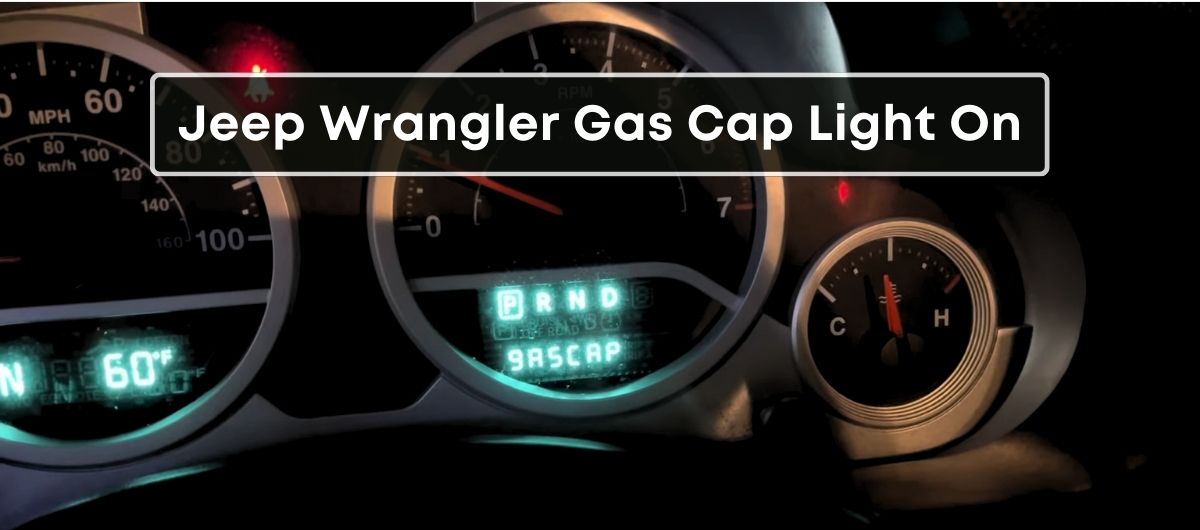One of the many things I like about modern vehicles, such as Jeep Wrangler, is the onboard diagnostics.
Oftentimes, the vehicle will display a warning light or message if any of its systems are not functioning properly.
One such warning is the gas cap light.
Jeep Wrangler Gas Cap Light Reset
The first thing you can do is remove the gas cap and inspect it.
Put it back on (with proper tightening) if it looks to be fine, or replace it with a new one if it’s damaged.
That’s because the gas cap light generally turns on when the cap is loose or damaged.
Once you’ve re-installed the cap, push the odometer reset button to turn off the warning message.
However, if the light comes back when you start the vehicle next time, the gas cap is fine, and the problem is with the EVAP system.
In such a situation, the easiest solution is to put smoke into the EVAP system through a smoke machine.
If there are any leaks, cracks, or loose connections, visible smoke will escape from that area, and you’ll know the exact location from where the system is failing.
This direct visualization allows for a more accurate and faster diagnosis compared to relying solely on DTC codes or manual inspection.
Once you’ve identified the problem and fixed it, you’ll need a code scanner to reset the warning light and DTC code (if there’s any).
That’s because many owners have complained that this light doesn’t turn off by disconnecting the negative battery cable.
What is the Gas Cap Light?
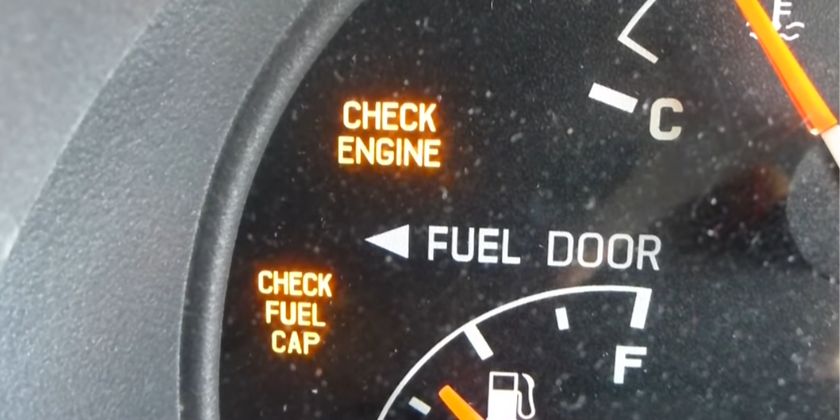
The gas cap is a small yet critical component of the fuel delivery system.
It is responsible for maintaining the correct pressure balance within the fuel tank by sealing it off from the outside.
While this function may seem to be trivial, a lot of things can go wrong if this cap is loose or damaged.
Therefore, the gas cap light is a way for the onboard diagnostics to remind the driver about the cap.
However, if the gas cap is fine and the message is still there, you’ll need to check different components of the EVAP system, as they give the same message upon malfunctioning.
These components include the purge valve, EVAP hoses, charcoal canister, etc.
Therefore, you’ll need to inject the smoke into the EVAP system to find out which of its parts is leaking and causing the issue.
On the other hand, if you don’t have access to the smoke machine, you’ll have to check each of those abovementioned components manually.
5 Reasons For Jeep Wrangler Gas Cap Light On
Below, we’ll discuss the main reasons for the Jeep Wrangler gas cap light and their fixes.
1. Loose Gas Cap
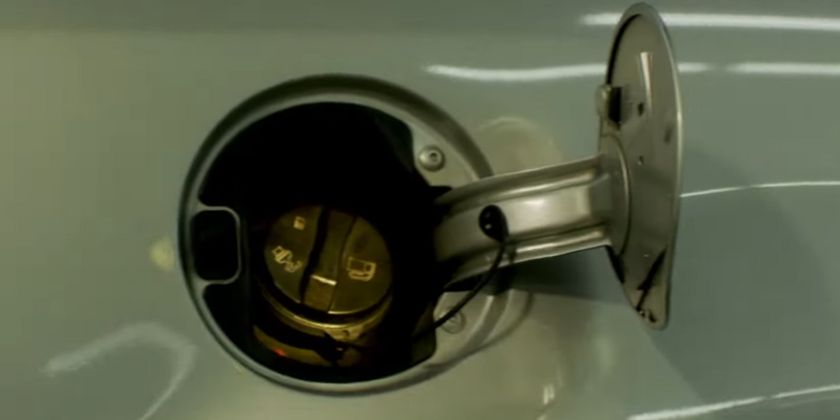
The first thing you should check would be the gas cap itself, especially if you got the gas cap warning light right after refueling.
We often hurry at the fuel station and do not pay much attention when tightening the gas cap, resulting in the cap being loose.
But why is a loose gas cap such a big deal that it triggers a warning light?
That’s because it will cause the fuel vapors to escape from the tank.
This will not only result in poor fuel economy but also disrupt the pressure balance and the fuel pump’s ability to consistently deliver fuel to the engine.
In some other scenarios, the pressure imbalance leads to excess air entering the system and diluting the air-fuel mixture. Both of these issues are not good for your vehicle.
Not to forget about the increased emissions that are harmful to the environment and the dust particles that can enter the fuel system (as there’s no seal) and contaminate it.
These are the main reasons why the gas cap warning light turns on as soon as the onboard diagnostics system detects that the cap is not fully sealed.
Additionally, the phrase ‘gas cap’ will be written on the odometer display to remind the driver to check the cap as early as possible.
In such a situation, you need to stop the vehicle, remove the gas cap, and put it back on.
But tighten it properly this time and continue until you hear a single clicking sound, which indicates that the cap is perfectly sealed.
2. Damaged Gas Cap
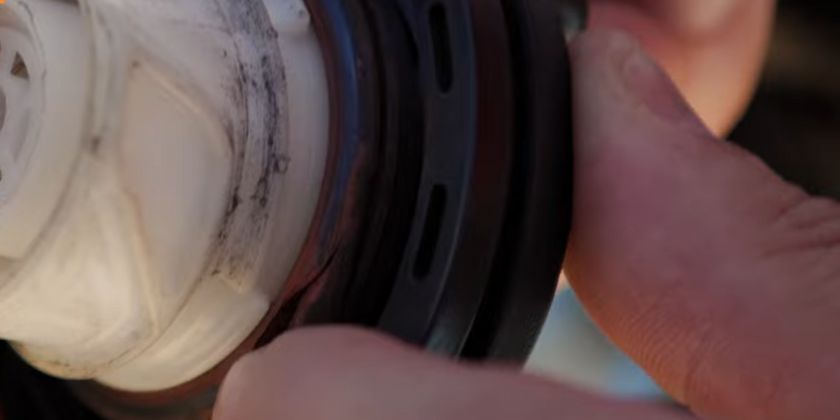
If you’ve tightened the gas cap correctly and have been driving the vehicle for 15-20 minutes, but the gas cap light is still turned on, it’s time to recheck the cap.
That’s because cracks, wear, or a broken seal on the cap can allow the vapors to escape even when you’ve tightened it correctly, resulting in a warning message.
Sometimes, dust and dust can settle between the cap and fuel filler opening and prevent the former from working properly.
However, if the cap appears to be cracked, the only solution is the replacement.
When replacing, make sure the new cap is OEM-certified, as many aftermarket caps will not fit perfectly on Jeep Wrangler.
3. Leaking Charcoal Canister
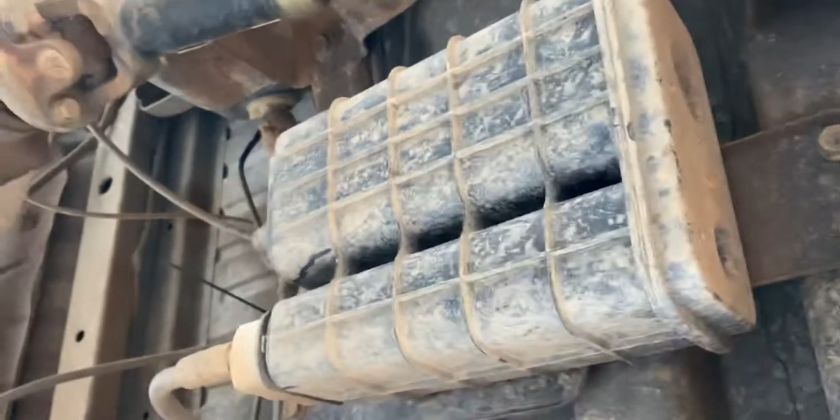
If you’ve cleaned/replaced the gas cap but the warning light is on, your vehicle’s EVAP system is leaking.
For those who don’t know, the EVAP system is designed to prevent fuel vapors from escaping into the atmosphere.
Whenever we refuel our vehicles, almost 20% of the gasoline turns into vapors and can escape into the atmosphere. This will result not only in poor fuel economy but is also harmful to the environment.
The EVAP fixes this problem by directing these vapors into a charcoal canister, where they are stored temporarily.
When conditions demand, the purge valve opens, allowing the intake vacuum to draw these vapors from the charcoal canister into the engine.
Once inside the engine, these vapors are mixed with air and fuel inside the combustion chamber.
However, if any of the EVAP system’s inner components are damaged, fuel vapors will start to leak out. The ECU will detect this as a cap issue (as both have similar symptoms) and trigger the gas cap light.
In addition, you’ll receive the Check Engine light and the P0442, P0455, P0456, or P0457 DTC codes.
Therefore, you’ll need to inspect different EVAP components to find out which one is causing the leak.
The first one of those components is the charcoal canister.
As mentioned above, this canister contains the active charcoal to absorb and hold the vapors.
However, it can crack due to physical damage or wear, leading to EVAP leaks.
To check whether that’s indeed the case or not, you’ll need to remove the canister and inspect it visually.
If there’s no visual damage, check for any traces of liquid fuel inside.
That’s because the charcoal inside the canister can saturate due to fuel overfilling, causing the former not to store vapors effectively.
4. Damaged EVAP Purge Valve
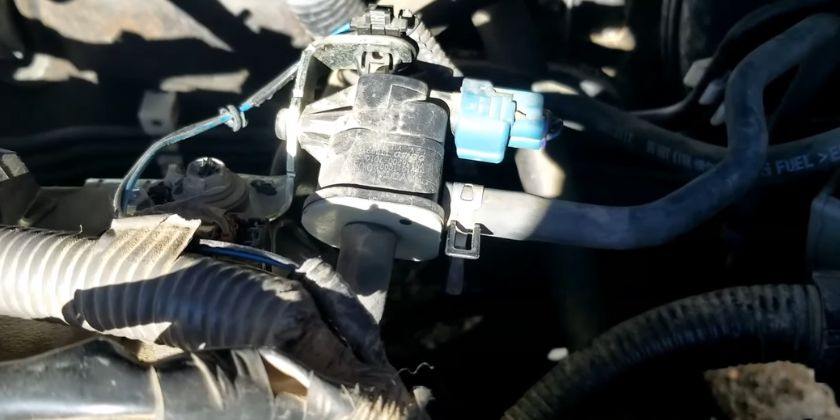
The next thing you’ll need to check is the purge valve.
This valve is controlled by the ECU and remains closed most of the time.
When conditions require, the ECU opens it to allow the stored fuel vapors to flow from the charcoal canister into the engine’s intake manifold.
However, if this valve is stuck closed due to debris or physical damage, the charcoal canister will get saturated with fuel vapors and might release some of those vapors directly.
This will be considered an EVAP system leak and will trigger the gas cap light.
Watch the video below on how you can test a purge valve.
If you find it to be physically damaged, replacement is the only option you’re left with.
5. Damaged EVAP Lines
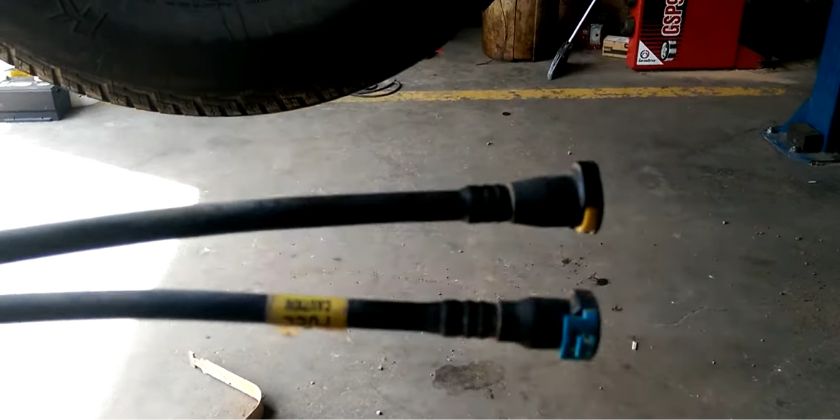
Another area you should check is the EVAP lines. These are the hoses that carry fuel fumes from the fuel tank to the charcoal canister and then to the intake manifold.
These hoses are usually made of rubber or plastic and can be damaged by heat, roadside debris, and accidents.
As a result, the vapors start to leak out into the atmosphere, and the gas cap light turns on.
Like other issues, you’ll need to examine these lines physically and replace them if there are any cracks or holes.
Frequently Asked Questions
Is It Safe To Drive With The Gas Cap Light On?
If you’re sure that the gas cap is sealed properly and the gas cap light is on due to some issue with the EVAP system, then it’s safe to drive with this warning for some time.
However, you shouldn’t ignore it for too long either, as it leads to reduced fuel efficiency and increased emissions.
What Symptoms Does a Bad Gas Cap Cause?
The primary symptoms of a faulty gas cap include fuel smell around your vehicle, poor fuel economy, and engine misfiring.
What Codes Will a Bad Gas Cap Cause?
A bad gas cap generally triggers a P0442, P0455, P0456, or P0457 DTC code.
Does AutoZone Check Gas Caps?
Yes, AutoZone can help you determine whether your gas cap is damaged or not.
How Much Does It Cost To Fix Gas Cap?
The only ‘fix’ for a broken gas cap is the replacement, which usually costs $10-$60, depending on the vehicle’s make and model.
Can A Worn Gas Cap Cause The Check Engine Light?
If the cap is worn and can no longer provide a proper seal, the engine’s performance will be negatively affected, resulting in the Check Engine light by the vehicle’s onboard diagnostics system.
How Long After Tightening The Gas Cap Will The Engine Light Go Off?
If the Check Engine light is triggered by a loose gas cap, it will turn off 10-20 minutes after you’ve tightened the cap.
How Many Times Should a Gas Cap Click?
In Jeep Wrangler vehicles, you should tighten the gas cap until you hear a single clicking sound.

